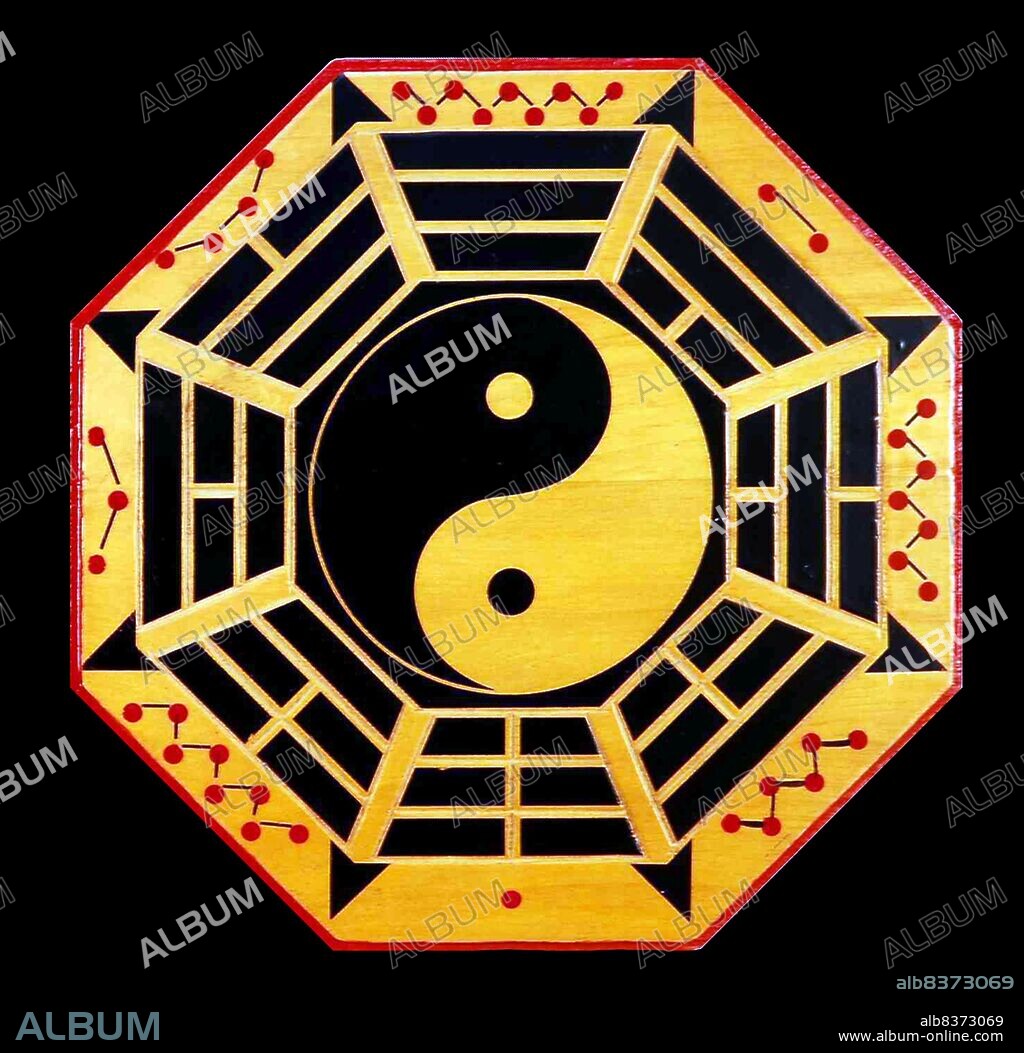alb8373069
China: 'Bagua' eight trigram diagram surrounding central yin-yang symbol, paint on wood

|
Ajouter à une autre Lightbox |
|
Ajouter à une autre Lightbox |



Avez-vous déjà un compte? S'identifier
Vous n'avez pas de compte ? S'inscrire
Acheter cette image.
Sélectionnez l'usage:

Titre:
China: 'Bagua' eight trigram diagram surrounding central yin-yang symbol, paint on wood
Légende:
Voir la traduction automatique
The bagua are eight trigrams used in Taoist cosmology to represent the fundamental principles of reality, seen as a range of eight interrelated concepts.
. Each consists of three lines, each line either 'broken' or 'unbroken'', representing yin or yang, respectively. Due to their tripartite structure, they are often referred to as 'trigrams' in English.
. In Chinese philosophy, yin and yang (also, yin-yang or yin yang) describes how apparently opposite or contrary forces are actually complementary, interconnected, and interdependent in the natural world, and how they give rise to each other as they interrelate to one another.
. Each consists of three lines, each line either 'broken' or 'unbroken'', representing yin or yang, respectively. Due to their tripartite structure, they are often referred to as 'trigrams' in English.
. In Chinese philosophy, yin and yang (also, yin-yang or yin yang) describes how apparently opposite or contrary forces are actually complementary, interconnected, and interdependent in the natural world, and how they give rise to each other as they interrelate to one another.
Crédit:
Album / Universal Images Group / Pictures From History
Autorisations:
Taille de l'image:
4200 x 4100 px | 49.3 MB
Taille d'impression:
35.6 x 34.7 cm | 14.0 x 13.7 in (300 dpi)
Mots clés:


 Pinterest
Pinterest Twitter
Twitter Facebook
Facebook Copier le lien
Copier le lien Email
Email
